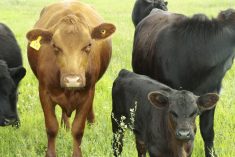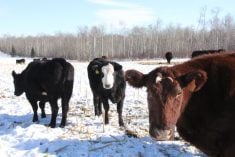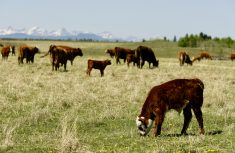Beef producers often have questions on the relative feed value of the different forages, grains and byproduct feeds they have access to. Many of these questions centre on energy and protein content, how much to feed and what type of supplement, if any is required. Understanding relative feed value and the need for specific supplements requires knowledge of feed quality (i.e. forage energy, protein and mineral content) as well as the animal’s nutrient requirements for a given level of production. It is also important to have an understanding of how cattle digest and utilize the nutrients in the feed they consume. It is this latter topic that I would like to address in this column and follow up next month with a focus on feed quality and how modern systems of analysis can help to more accurately formulate diets for the cattle we feed.
Read Also

Benefits to farmers of testing forage seed
When establishing a new forage stand that will ideally be productive for five or 10 years, producers want to set…
When discussing your feeding program with your nutritionist, many of you have likely heard the phrase “feed the rumen first.” To understand what is meant by this statement we need to look in more detail at rumen fermentation, a term I will use interchangeably with rumen digestion. The rumen and reticulum, which for the sake of this discussion will be considered together, is basically a large fermentation vat with a tightly controlled environment, particularly in terms of temperature, acidity and anaerobic (i.e. lack of oxygen) status.
The contents of the rumen include both a solid feed mat and a fluid phase, both of which are mixed by contractions of the rumen wall. Within this environment, three categories of microbes (bacteria, protozoa and fungi) coexist. While the latter two are important, I will concentrate on the role of the bacteria in rumen digestion. If we look at this group, the first thing we see is that the rumen contains literally billions of bacterial cells, representing many different species, each with a different role in digestion.
Broadly, they can be grouped into three categories — fibrolytic, amylolytic and proteolytic bacteria. Fibrolytic bacteria preferentially ferment the fibrous carbohydrates of forages such as cellulose and hemicellulose. Amylolytic bacteria prefer to ferment starch in cereal grains while proteolytic bacteria break down feed protein into smaller constituents, namely peptides, amino acids and ammonia.
The relative proportions of these three groups and their contribution to rumen digestion will depend on the nature of the diet (i.e. high forage versus high grain). In most situations, these groups work together to digest the carbohydrate and protein content of the feed consumed by the animal. During this process, as chemical bonds within the feed are broken, several important nutrients are released. These include energy, volatile fatty acids and the byproducts of protein breakdown discussed above. The released energy and byproducts of protein breakdown serve to support the growth and reproduction of the rumen bacteria. For example, many rumen bacteria utilize ammonia to synthesize essential amino acids such as lysine and methionine. This ability is not only important for bacterial growth but it is also a very important step in terms of how your cattle meet their protein requirements, a point I will come back to shortly.
Another unique feature of this system is the turnover of rumen contents. Undigested feed will eventually pass out of the rumen as the fluid and solid phases of the rumen turn over. As it leaves the rumen, the undigested feed residue will be subjected to digestive processes in the lower gut. Rumen bacteria are part of this turnover process, with cells leaving the rumen with both the fluid and solid phases. In particular, when rumen bacteria reach the abomasum and small intestine, they are subjected to the same digestive processes as undigested feed protein.
As a result of rumen fermentation, the bacteria make two important contributions to the nutrition of the animal. First the volatile fatty acids released as a result of carbohydrate fermentation are absorbed across the rumen wall and are used for several metabolic functions, most notably as the primary energy source for the animal. Secondly, when the bacteria pass out of the rumen with the undigested feed and reach the small intestine, they serve as a source of essential amino acids for the animal. In fact, bacterial protein is the primary source of amino acids for cattle. The fact that rumen bacteria can synthesize essential amino acids from basic compounds such as ammonia and that the animal can use these amino acids for productive purposes sets ruminants apart from other classes of domestic livestock. Specifically, it reduces the need for expensive protein supplementation. It is also the reason why we can feed urea to cattle (i.e. urea is a source of ammonia in the rumen).
Simply put, maximizing rumen bacteria growth is the most efficient and cost-effective way of meeting the energy and protein needs of your cattle. That’s why we “feed the rumen first!” Now, you may be wondering how this information helps one to formulate diets. I will tackle this question in my next column, but to leave you with a hint, the focus will be on systems for feed analysis and ration formulation that match feed nutrient characteristics to the complex dynamics of rumen fermentation just discussed.
















